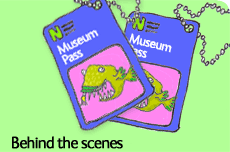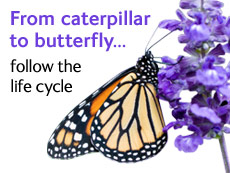Discovering butterflies in Colombia
In December 2007, Natural History Museum butterfly curator Blanca Huertas discovered a new butterfly species, named Idioneurula donegani, in the high Andes of Colombia. Find out more about her discovery and her work at the Museum in the interview below.
How many butterfly species are there?
At the last count in 1997 there were about 17,950 butterfly species in the world. Now it is probably higher than 18,000 species.
How do you find new butterflies species?
Finding new species is not easy. The best way is to go to places where nobody has been before. Personally I find Colombia to be a very interesting place to visit. Very few people go there to look for butterflies because of the political situation, so there's a greater chance of finding new species in remote areas.
How did you prepare this expedition?
First I looked at maps and tried to find an area that has not yet been fully explored, then gathered information from the local people of the area. I also looked in books about butterflies to make sure that nobody had already been there to study butterflies.
Once I knew where I was going, I looked for a team of around 7 people to come with me. And then came the most difficult part, finding the money. For this expedition it took me 6 months to do all that.
How long did you stay in the field in Colombia?
I do really short, intense expeditions called 'rapid assessments'. We cover one area in a week, collect as much as we can and then go to another site. In this case we had 1 week to prepare and organise everything once we were in Colombia. Then a helicopter dropped us on an isolated peak 3,000m up in the Yariguíes Mountains. We worked there for a week before it flew back to pick us up.
How did you work once you were on the mountain?
We had just a few hours of daylight, so we usually started working before 8am and finished about 6pm, as if we were in an office. We did a lot of walking to get to the collection site as we had to set the traps far away from our campsite. Everybody worked in pairs for safety, using traps, nets for catching butterflies and butterfly envelopes for storing the collected specimens.
How did you know that you had found a new species?
It is difficult to be sure at once. About 3,500 species have been described in Colombia so you need to be quite an expert. Generally once you get suspicious, it means you might have found something new or at least rare.
In this case, when I saw the butterfly I thought 'Gosh, what's that?' I took lots of pictures and notes and observed the butterfly in the wild. I also started to look for the female butterfly, the caterpillar and its host plant as each caterpillar has a favourite plant to feed on. I couldn't find any of these.
Then what did you do?
We collected as many specimens as we could and took them to a laboratory in a museum where we could look at them in detail. We also compared them with other specimens from the museum collection.
We had to be very cautious. We consulted other specialists and checked lots of books. We studied different parts of the butterfly and then wrote a paper in an academic publication to announce the new species. That is the only way to make a new species valid. You also need to have what we call a type specimen, which is the first and best representative specimen of the new species that other people will be able to use for their studies.
How often do you do fieldwork like this?
Every 6 months, although finding funds for this kind of expedition is more and more problematic.
What do you enjoy the most about doing fieldwork?
Everything, to be honest. I like being completely unplugged from the busy world. This time we just had one radio or phone in case of emergency. Around us there was no noise, just the sound of nature. It was amazing.
Why do you like butterflies?
For the same reason that men like women, I guess. They are so beautiful but at the same time so complex and full of mysteries.
Toolbox

In World War II the Museum was used as a secret base to develop new gadgets for allied spies, including an exploding rat!

